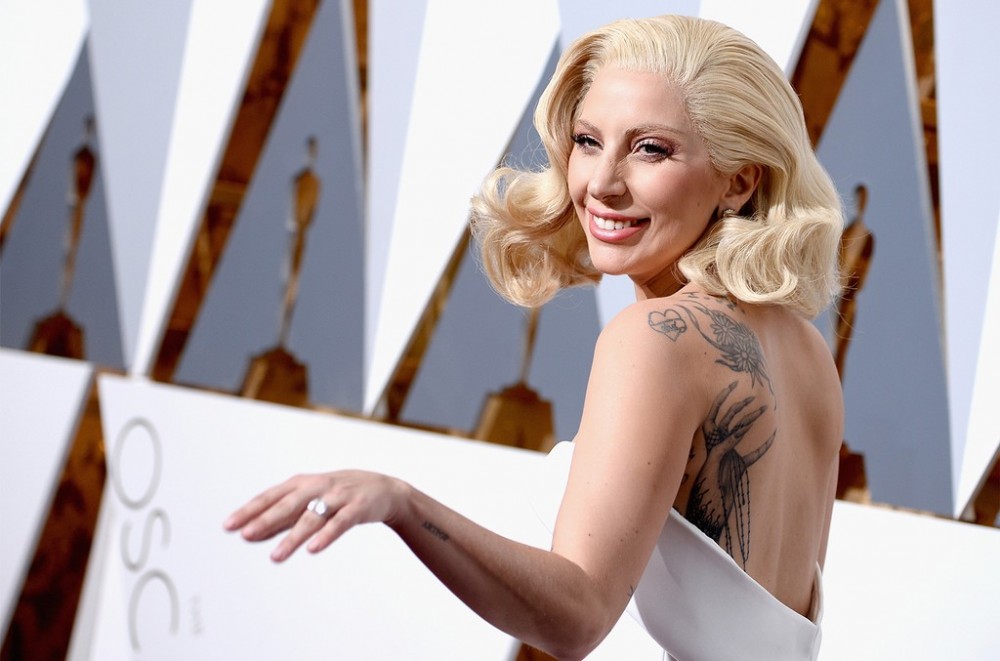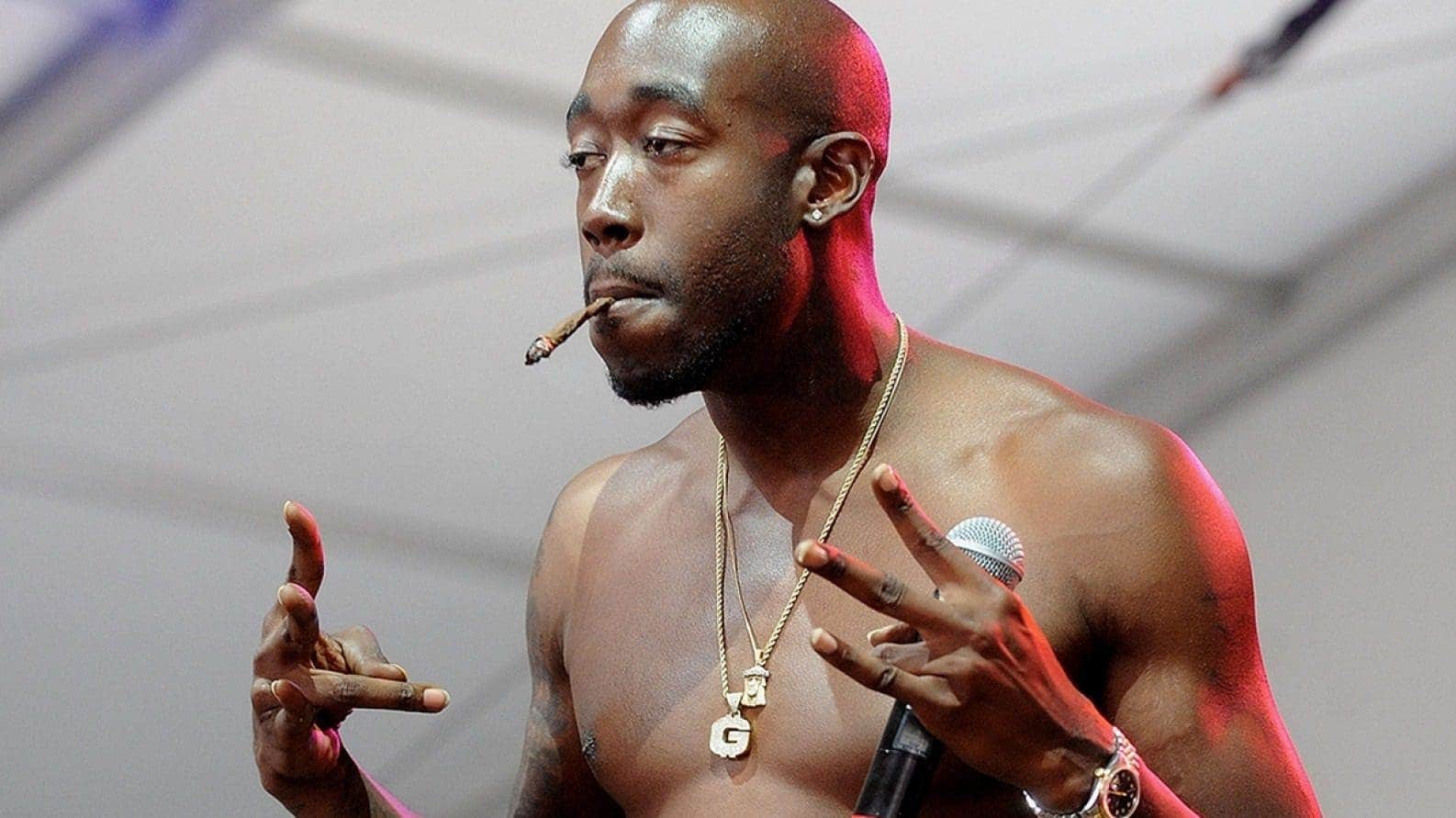Joanne wasn't Lady Gaga's first album to fail to meet expectation, but it's still the only album of hers that feels like it lacks a distinct identity.
If you’re looking for a moment where the fate of 2016’s Joanne as the odd album out in Lady Gaga‘s catalog was sealed, you could probably look to February 5, 2017, when Gaga took the world’s biggest stage at halftime of Super Bowl LI. Though Joanne was just three and a half months old at that point — the Joanne World Tour would not even start until that July — Gaga only devoted one spot in her eight-song set to the new LP, the penultimate-slotted power ballad “Million Reasons.” Barnstorming lead single “Perfect Illusion,” with its underwhelming No. 15 debut on the Billboard Hot 100, was ignored entirely.
That Gaga would downplay the still-new album in the highest-profile performance of her career was unsurprising. The set, promoted by Lady Gaga both as a tribute to Gaga’s late aunt of the same name and a singer/songwriter-y grasp at more direct emotional connection with her Little Monsters, had debuted to lukewarm reviews and solid, if unspectacular first-week numbers — at least for an artist who’d sold a million copies of Born This Way in its debut week just a half-decade earlier. The aforementioned “Perfect Illusion” had underwhelmed, and while follow-up “Million Reasons” would find a warmer response — even shooting to the Hot 100’s top five following her Super Bowl performance — it was the lone single from the album that would really catch with radio or the larger public.
Of course, Joanne was not Lady Gaga’s first album to fail to make a lasting impression at radio. But that’s part of the reason why the set feels so removed from the rest of her catalog — it’s the only album of hers that feels like it lacks a distinct identity within her discography. It’s obviously not the kick-the-door-down debut (The Fame), the can’t-miss victory lap (The Fame Monster) or the too-big-to-fail statement album (Born This Way), and it can’t even be the underperforming #JusticeFor fan favorite, because that status already belongs to its predecessor, 2013’s overcooked ARTPOP. And the closest thing Joanne has to a narrative — Gaga reimagined as a sort of heartland singer-songwriter, playing to “this girl in the middle of the country somewhere crying her eyes out in the field with a drink in her hand and her kid in the other,” as she told E! of the album’s intentions while recording — was totally subsumed by what happened next.
If you haven’t thought about “Million Reasons” in a while, that’s probably because it was eclipsed in just about every way imaginable by “Shallow,” the power ballad Bradley Cooper duet from Gaga’s following project, the blockbuster film remake (and accompanying best-selling soundtrack) A Star Is Born. Her Ally character, an aspiring singer-songwriter, essentially spends the movie turning into a more coherent version of the everywoman pop idol that she imagined herself performing as on Joanne, and the Hot 100-topping “Shallow” was the true tear-in-her-beer singalong anthem that she’d gotten most of the way towards with “Million Reasons.” The universal success of A Star Is Born essentially allowed Gaga to realize the potential of (and close the book on) her Joanne era, but left the album that kicked it off feeling increasingly distant.
Listening to Joanne in 2020, it’s also stark just how anomalous it feels as part of what we remember as mid-late ’10s pop music. It was the time of trap and trop-pop in the mainstream, and the turbo-pop that Lady Gaga once dominated the radio with was suddenly nowhere to be found. It made sense that Gaga would head for new terrain, but just exactly where she ended up was a little muddled. “Perfect Illusion,” the album’s first taste, has an echo of Born This Way’s dance-pop stompers with a little more of a synth-rock edge, but other electro-fied up-tempo cuts like the unconvincingly southern-fried “A-YO” and “John Wayne” seem more aimed for square dances than mosh pits, while the more successful “Dancing in Circles” sounds like 2010’s “Alejandro” updated to a wound-down version of the Island-flavored trop-pop then omnipresent on radio.
Similarly, the lighter-waving, heart-rending “Million Reasons” could maybe have played on contemporary country radio — and was even co-written by Nashville stalwart Hillary Lindsey — but the swaying, supportive Florence Welch duet “Hey Girl” feels beamed in from a pop&B album from a decade earlier and well-intended-but-misguided closing protest ballad “Angel Down” plays like a cinematic closing-credits theme. In between, there’s also digressions like the brassy retro soul-pop of “Come to Mama” and the jaunty, swampy almost-boogie of “Sinner’s Prayer.” Some of it worked well, but little of it really fit together, and none of it really fit within 2016 top 40. (Tellingly, Gaga released the Chainsmokers-esque one-off “The Cure” as a sort of radio make-good in April 2017, just six months after the song’s release; the song was mostly positively received but may have come too late, tapping out at No. 39 on the Hot 100.)
Gaga certainly wasn’t the only major pop star of the early ’10s who slipped a little trying to pivot around this time. Katy Perry’s Witness, released the following June, purported to be a timely stab at “purposeful pop,” but was similarly confusing in its intent and unmoored in its sound and songwriting, and saw the worst commercial returns of her career to that point. Miley Cyrus’ Younger Now, which dropped that September, attempted a more stripped-down pop/rock that also aimed to reach more of a Middle American fanbase, but mostly left critics unimpressed and made little impact on radio. Only Kesha, who returned from years spent in legal battles trying to free herself from former mentor and alleged abuser Dr. Luke with a rootsier sound and more personal songwriting than the hedonistic electro-pop she became a star with, was able to critically and commercially reinvent herself with Rainbow that August (though even that album was mostly ignored by radio, too).
Perhaps Joanne was never going to end up being a blockbuster, but the seeds were there for it at least to be a more memorable and identifiable chapter in Gaga’s career. There’s an alternate-universe vision of Joanne built primarily around Gaga’s glitterballed take on heartland rock — fist-pumpers like fan-favorite opener “Diamond Heart” and “Perfect Illusion” — and singer-songwriter balladry like “Million Reasons” and heartfelt title track (specifically the Piano Version, a Grammy-winner in 2018) that at least makes sense as a full listen, as an album that fans can have strong feelings about. As is, it’s tough to come up with a visceral reaction to Joanne, because it’s still the only Lady Gaga album — including the Star soundtrack, or even 2014 Tony Bennett duets set Cheek to Cheek — that doesn’t present a clear idea of what it is.
The ironic thing about the lessons learned from Joanne‘s quick dissolve is that Gaga doesn’t seem to have actually needed to course-correct anything as a result. Not only did A Star Is Born paper over the album’s underperformance and get her career momentum immediately back on track, but in the meantime, top 40 radio has resumed being a haven for her brand of dance-pop scorchers. Chromatica, Gaga’s sixth solo set due out this Friday (May 29), was led by the disco clarion call of “Stupid Love,” which debuted at No. 5 on the Hot 100, her highest bow on the chart in nine years. “Rain on Me,” her yet more explosive Ariana Grande duet that followed last Friday, is set to challenge for an even bigger crash-landing in its first week. As a result, Chromatica seems destined to motor Gaga even closer back to pop’s center, as Joanne feels farther away than ever in its rearview.



